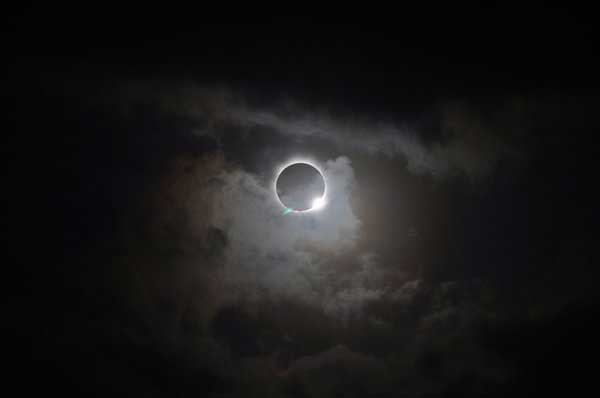
California, US (BBN)-On Wednesday, the moon will blot out the sun, creating a total solar eclipse that will darken the sky over parts of the western Pacific and Southeast Asia.
The spectacle will begin on March 9 and finish on March 8. Yes, truly, reports The New York Times.
That’s because the moon’s shadow will first fall over parts of the Pacific on Wednesday morning local time, and then cross the international date line and appear visible on Tuesday afternoon local time.
Total solar eclipses occur when the darkest part of the moon’s shadow, the umbra, encases part of the Earth.
Anyone standing where the umbra falls will see the moon engulf the sun for about four minutes.
This year, people in parts of Indonesia, Borneo and Sulawesi within a narrow strip stretching about 90 miles wide — the line of totality — will experience a blackout at some point from 7am to 11am local time. (The total eclipse will occur sometime from midnight G.M.T. (7pm Eastern) to 4pm G.M.T. (11pm Eastern).
“The cool thing for those who are going to be in the path of totality is that they are going to be able to see the outer atmosphere of the sun called the corona,” said C. Alex Young, a solar astrophysicist from NASA.
The corona will look like flames streaming from behind the moon.
“This is only visible from the ground during a total solar eclipse,” he said.
Those in Australia, South China, and Southeast Asia as well as Hawaii and Alaska will stand in the shade of a partial solar eclipse when the moon’s second shadow, the penumbra, catches them in its shade.
From their perspectives, it’ll look as if some galactic giant took a big bite out of the sun.
If you’re one of the billions of people who will not see this year’s eclipse, don’t fret; there are consolation prizes.
The San Francisco Exploratorium will live stream the total eclipse from Micronesia on its website.
And Jupiter will be at opposition Tuesday, allowing stargazers everywhere to see the planet at its brightest in the night sky without needing a telescope.
Finally, for those who live in the continental United States, the next total solar eclipse will pass through the middle of the country in August 2017.
Total solar eclipses occur about once every one to two years, the last one being in March 2015.
It’ll be the first time in nearly 40 years the spectacle will be visible from the continental United States, and it’s expected to bring in a flood of viewers, so consider stocking up on some protective glasses.
BBN/SK/AD